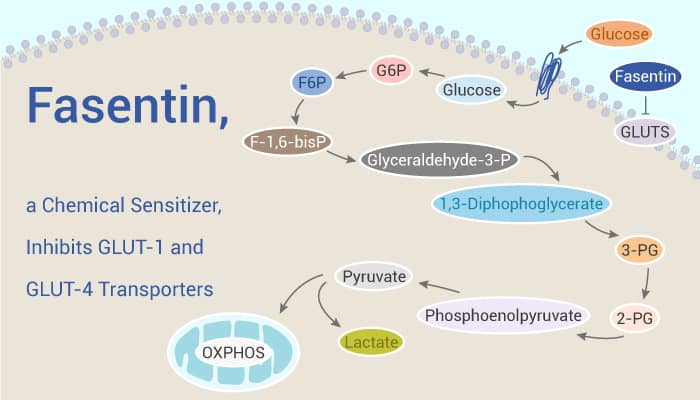Angiogenesis forms new blood vessels from pre-existing ones. Angiogenesis is a physiological and transient process that in adults is limited to some processes. They include reproductive cycles, wound healing, and bone repair. Nevertheless, a persistent and deregulated angiogenesis takes place in cancer and other diseases, such as proliferative retinopathies, psoriasis, rheumatoid arthritis, and diabetes, among others. Furthermore, the inhibition of angiogenesis could be a revolutionary therapy against tumor growth. Many factors regulate the angiogenic process, including vascular endothelial growth factor (VEGF). It acts through its receptor VEGFR2, and the fibroblast growth factor (FGF) family, such as FGF-2. In this study, Fasentin is a modulator of GLUT-1 and GLUT-4 transporters, thus inhibiting glucose uptake in some cancer cells. It is a chemical sensitizer to the death receptor stimuli FAS and TNF apoptosis-inducing ligand. Fasentin blocks glucose uptake in cancer cell lines and has anti-angiogenic activity.
Fasentin inhibits endothelial, tumor, and fibroblast cell growth without inducing cell death. It induces a cell cycle arrest in G0/G1 phase and reduces the cell number in the S phase in a dose-dependent manner. Fasentin also alters the expression of genes associated with glucose deprivation such as AspSyn and PCK-2. In addition, it arrests cells in the G0/G1 phase of the cell cycle in U937 cells. Moreover, Fasentin induces glucose deprivation, partially blocks glucose uptake in PPC-1, DU145, and U937 cells. Furthermore, it lowers levels of phospho-ERK in HMECs, indicating a partial inhibition on the ERK signaling pathway, even though the effect was not statistically significant. Fasentin does not inhibit the tyrosine kinase activity of VEGFR2.

In summary, Fasentin is a potent glucose transport inhibitor. It diminishes endothelial cell proliferation, differentiation, and invasion in a glucose metabolism-independent manner.
Reference:
Ocaña MC, et al. Sci Rep. 2020;10(1):6132. Published 2020 Apr 9.